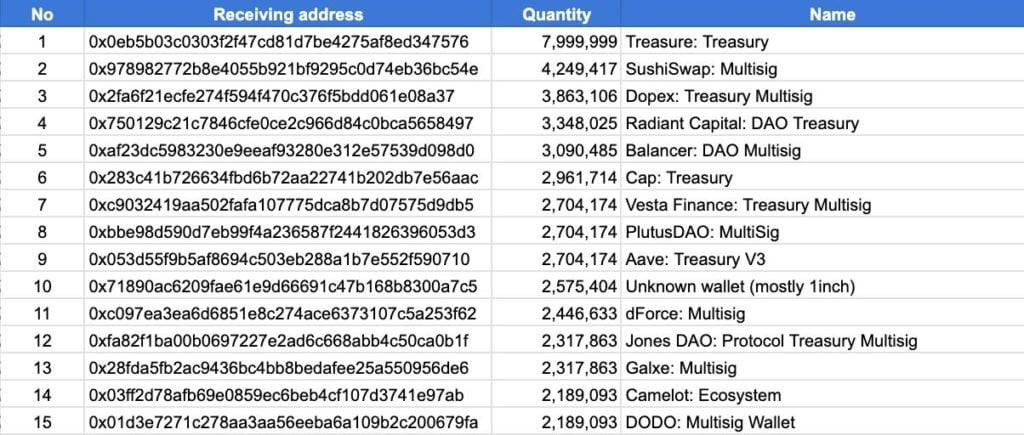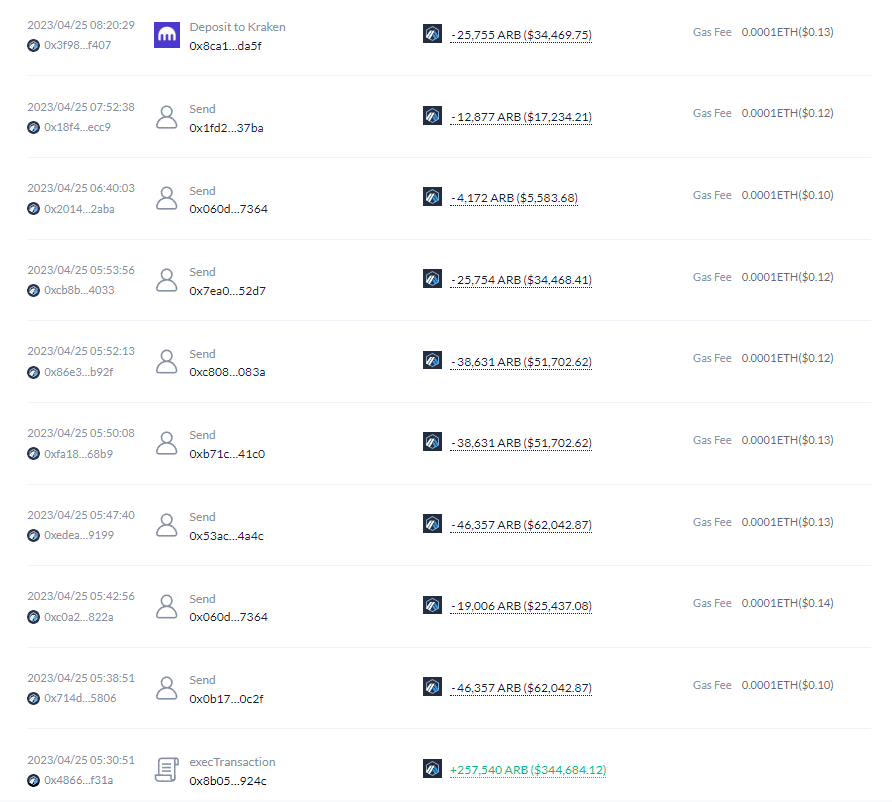A few days ago a scandal occurred in the crypto world, involving TridentDAO and Arbitrum.
Between 24 and 25 April, the Arbitrum foundation issued an airdrop of ARB tokens to all the most relevant projects and organizations in the ecosystem, with the aim of funding the growth of the blockchain and the activities built on it.
One of the entities, TridentDAO, has demonstrated that it has the same “diamond hands” as Elon Musk and has liquidated most of the ARB tokens given to it as an incentive to improve its products in the marketplace.
The Arbitrum community quickly lashed out at TridentDAO for acting in an opportunistic manner.
Summary
TridentDAO and the airdrop of Arbitrum’s foundation.
After rewarding early adopters in the Arbitrum community with the airdrop on 23 March, it was now the turn of DAOs, which are Decentralized Autonomous Organizations.
In fact, a few days ago, the Arbitrum foundation gave away about 90 million ARB tokens to all those projects that in recent years have decided to build their products and services on layer2 infrastructure.
Prominent among them are such big names as Sushiswap, Dopex, Radiant, Aave, Balancer and Vesta Finance.
One among them, TridentDAO, behaved somewhat selfishly and liquidated about half of the tokens that were airdropped to it.
The capital had been released with the aim of increasing the liquidity in the ARB/PSI pool of OasisSwap v1.5. Instead, the DAO in question planned to sell at an average price of $1.31 as many as 131,345 ARB of the 257,540 that were sent to it by the Arbitrum Foundation.
Monolith, founder and developer of TridentDAO, justified himself by saying that the tokens could not be used to vote on Arbitrum’s governance proposals (absolutely untrue) and that the choice to dump most of the tokens to the market represented the smartest choice in this context.
The main loser was PSI, a utility token in TridentDAO’s decentralized gaming ecosystem, which at the time of the news experienced a significant drop in price, quickly dropping from $1.65 to $1.17, only to recover slightly in the following hours.
The community did not take the news well, especially those who held PSI, as TridentDAO demonstrated that it had no real interest in increasing liquidity in the decentralized pools of OasisSwap and fostering an exchange economy for the token.
On the other hand, the ones who were not significantly affected were the ARB token and the Arbitrum ecosystem, given that the amount of tokens sold to the marketplace is insignificant compared to the average volume of transactions that are conducted on a daily basis.
In addition, many other DAOs have received significantly more than TridentDAO but without using the “sell” tool.
A complete list of Arbitrum’s airdrop to DAOs in its ecosystem can be found here.

Where did the Arbitrum (ARB) tokens that were given to TridentDAO go?
More specifically, we can see what happened to all the ARBs that were airdropped to TridentDAO by reconstructing the on-chain movements of these funds.
The initial allocation of 257,540 ARB was sent from Arbitrum’s foundation to TridentDAO’s multisignature wallet and then moved elsewhere, more specifically to 9 different addresses.
The decision to diversify the custody of the funds represents a choice probably dictated by the need to use the funds for different purposes and interests, rather than using the capital to strengthen the development of the Arbitrum ecosystem.
However, we cannot know whether TridentDAO will make a “buyback” of ARB in the immediate future and whether, in hindsight, this move will be considered smart.
All we know is that at the moment 25,755 ARB equivalent to about $35,000 have been transferred to the KRAKEN cryptocurrency exchange, almost certainly with the aim of exiting into FIAT.
Approximately the same amount was transferred to Kucoin, after a long round of transactions, via this starting address.
46,357 ARB were transferred to a wallet that swapped the entirety of the tokens into ETH and USDC.
The same fate was reserved for another 38,631 ARB that were sold for USDC at this address.
The actual incentives for PSI and liquidity pool on Oasiswap were dismal when we think of the total that was transferred to exchange or sold for stablecoin or ETH.
In total about $10,000 of the $345 received as airdrop was used to fund PSI’s activity and development.
If TridentDAO thought of spreading its funds over different wallets so as not to attract the attention of a mass token sell-off, it failed in its intent since current Web3 on-chain monitoring tools provide us with detailed information about when, how much, and where ARB related to the airdrop were sent.

Blockchain hides, but doesn’t steal: the best tools for tracking the movement of money on-chain
The blockchain represents a digital ledger that is distributed among network nodes and is immutable: this means that unlike how it is portrayed in the mainstream narrative, this technology is highly transparent as far as cryptocurrency exchanges are concerned.
Most crypto assets like Bitcoin are described as “pseudo-anonymous” in the sense that they can be used anonymously as long as a wallet owner decides to reveal his or her identity or provide details of his or her wallet publicly.
In the case of decentralized autonomous organizations such as TridentDAO, disclosure of one’s on-chain identity proves to be a must if one wants to act transparently within the crypto community and all the more reason to receive an airdrop from a blockchain infrastructure team.
There are a variety of Web3 tracking tools to monitor the flow of cryptocurrency between different wallets: they differ based on the nature of usage and cost to the end user.
Companies of the caliber of Chainalysis, Anchain, and Elliptic require high costs to obtain crypto asset monitoring and auditing services and do not work with an audience of low-to-medium economic capacity.
On the other hand, there are free tools and websites that can help with independent monitoring of all wallets on the network.
For example, DappRadar and Debank are very good solutions when trying to obtain on-chain information related to fund transfers, smart contract interactions, and asset purchases/sales.
Another option is to use a public block explorer, although this is more complex and has a less clean GUI than the examples mentioned above.
If you do not have much experience in the field, the advice is to try to experience the thrill of monitoring wallets, starting with your own and then snooping on those of other individuals, through Debank, which presents one of the best services on the market.





